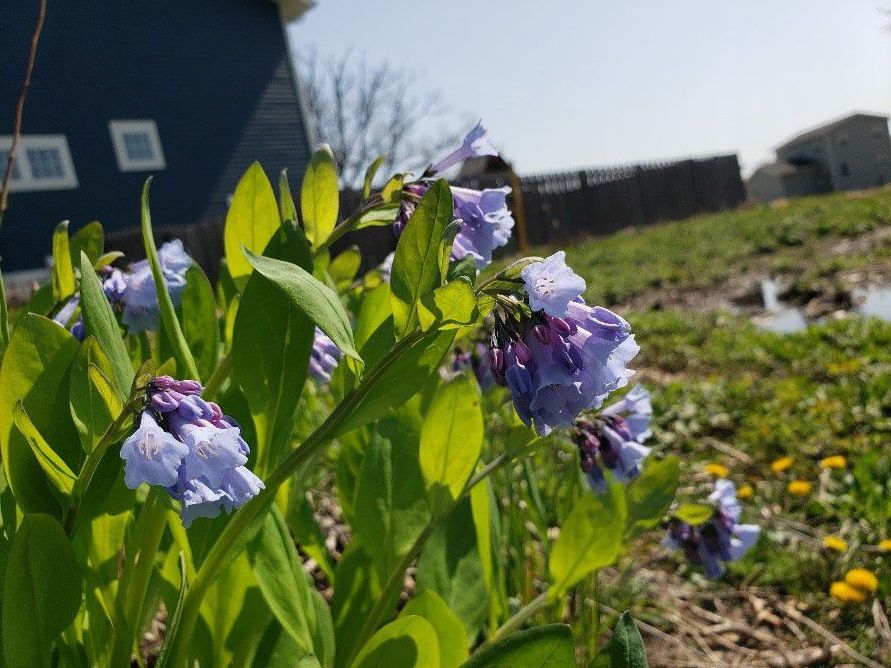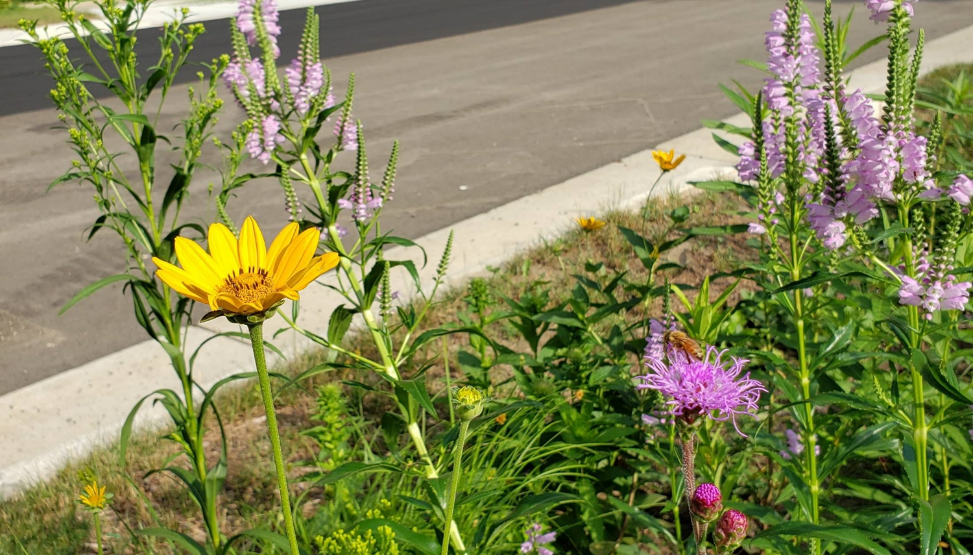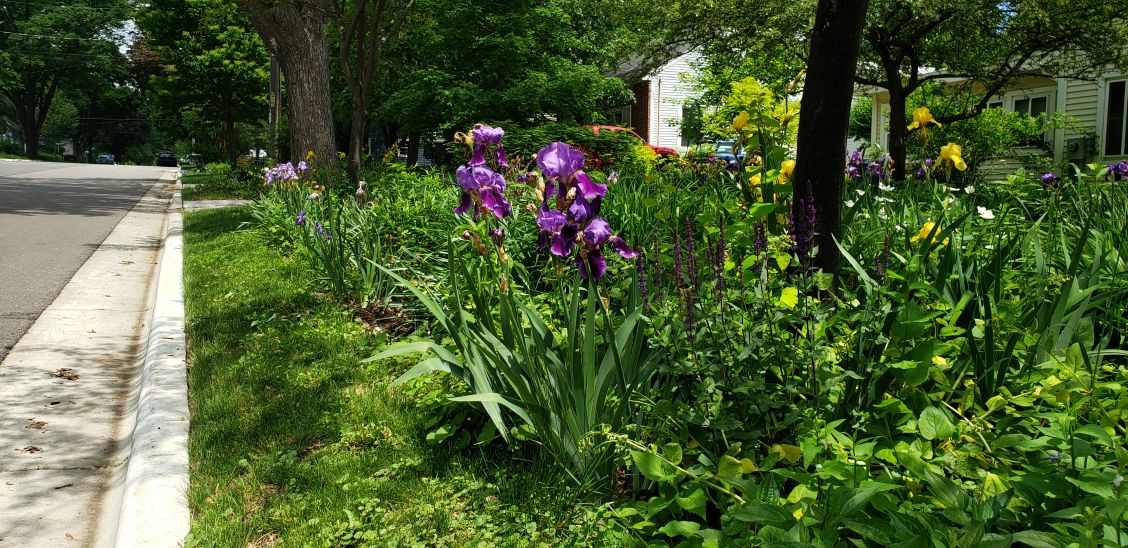5 things you can do for the environment
posted
By: Emily Jorgenson, City of Madison Engineering Division, ejorgenson@cityofmadison.com
No. 1: Provide spring resources for pollinators!
Early spring/summer is a crucial time for insects. The presence of early-blooming flowers can mean the difference between life and death. After a long winter, bumblebee queens emerge from hibernation underground seeking a suitable nesting site and food. To make life easier on them, leaving a source of common, early-blooming plants such as dandelion or common blue violet in your yard can be super helpful. If you’re looking to create a more intentional space, adding native species such as Virginia bluebells, wild geranium, wild lupine, or shooting star is another way to add these resources.

No. 2: Hold off on spring/early summer clean-up until temperatures are consistently above 50 degrees!
If you have garden beds, you may be chomping at the bit to remove last year’s growth and get them looking prim and proper. If you do want to have a more manicured look to your garden in spring, it is recommended to leave the vegetation up at least until temperatures are consistently above 50 degrees to avoid damage to overwintering insects.
Many native insects overwinter in vegetation. Hollow stems are an important winter hideout as is leaf litter and brush piles. Did you know that 30% of bees lay their eggs in cavities, hollow stems, or holes in dead wood or snags?

No. 3: Plant one species of native plant in your yard!
Native plants have so much going for them. When a lot of people think of native plants, they think of a jungle-like planting that has a mind of its own. If that’s your jam, we love it. If you like a tidier, more organized-looking yard, know that native plants can look and act just like the ornamentals that you buy at the store. Think of your favorite plant in your garden bed. There is a native plant equivalent that provides the same look but with extra ecological value added. Where ornamental plants can sometimes be resources for insects and pollinators, native plants always provide high-quality resources to our native fauna and if selected carefully can be beneficial to specialist species that rely on specific plant species that they co-evolved with. There are literally hundreds of options of native grasses, groundcovers, flowers, and sedges all in varying colors, heights, and growth habits, and habitat preferences.

No. 4: Build a rain garden!
Installing a rain garden is a great way to improve stormwater quality right in your yard. Rain gardens capture rain water and pollutants from your roof or driveway that would have otherwise gone straight to a downstream body of water, like Lake Mendota or Lake Monona. For resources including how-to manuals, recorded webinars, and sample planting plans, check out the Dane County Ripple Effects Rain Garden page.

No. 5: Build a downspout garden!
Not up for all that digging? A downspout garden is an alternative to a rain garden that can help infiltrate stormwater and catch runoff on site. Unlike the shallow basin of a rain garden, downspout gardens remain level with the rest of your yard; the soil is simply amended with compost and planted with native plants. Compared to turf grass, which is often compacted, downspout gardens can infiltrate water at a much higher rate. Not only that, when planted with natives they are a great habitat resource! Check out the Dane County Ripple Effects Downspout Garden page.
